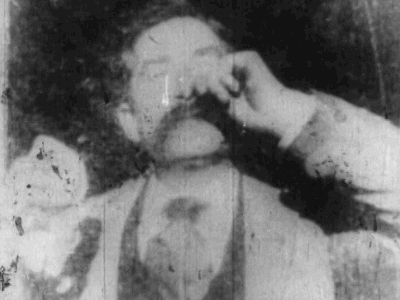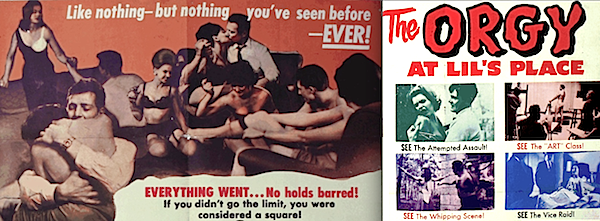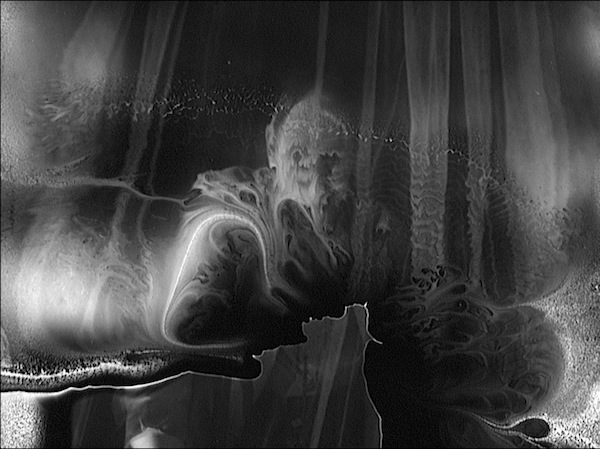Orphan films encompass a very wide scope of material that has, for a multitude of reasons, fallen outside the interest of commerce, and often suffers without the traditional safety net of market demand. Initially a rallying point for archivists, the preservation and subsequent celebration of orphaned media, in all their niche glory, has gained traction in disparate pockets of scholarly study, artistic repurposing, legislative consideration and popular community events, such as Home Movie Day and public screenings from well-stocked private collections. The place where these varied interests meet is the biennial Orphan Film Symposium, now quietly rolling through its fourteenth year. Weekends packed with presentations, panels and screenings, the Symposium bridges a gap between academic theory and archival practicality with a collective enthusiasm for both the underseen and undervalued.
Nestled between Orphans 8 (held at the Museum of the Moving Image in 2012) and Orphans 9 (to be held at the EYE Film Institute in 2014), a Midwest addendum recently assembled at Indiana University ,where there is a surprising synergy of film study, exhibition and preservation, represented not only in their academic curriculum but also in their impressive new archive and cinema. Referring to the event, which took place September 26-28, as a conference or a symposium, however, sells short the abundance of passion in the program and the attending orphanistas. In addition to the evening screenings, stacked with rare movies of all shapes and sizes, every presentation is a pretense to a discovery, a restoration and an oddity that gets splayed out on the screen before being routed back to the cool temperatures of archival obscurity. A perfect example is Orphans founder Dan Streible’s investigation into the definitive version of Edison’s Kinetoscopic Record of a Sneeze, Fred Ott’s semi-autonomous convulsion which became the first moving image to be copyrighted in the U.S. Researching various the various trails of information that this iconic work created, Streible uncovered that the pioneering piece was actually eighty-one frames, rather than the forty-five frames depicted in the original 1894 Harper’s Weekly article. How do the Orphans celebrate this discovery? They strike a new print of Fred Ott’s Sneeze that includes all eighty-one frames and present it at Orphans Midwest. If you blink, you might miss the gravity of the moment.
The same could be said for the clips of Hollis Frampton’s A Dream from his unfinished Magellan Cycle rolled out by Ken Eisenstein as an outtake. Eisenstein’s meditation on Frampton’s obsessive and contextual creative process augments the mesmerizing footage—psychedelic images created with the Paik synthesizer visually constituting Frampton’s phosphenes of pre-natal dreams. To complete this heterogeneous circle of orphan life with another example, Donald Crafton of the University of Notre Dame and Andrew Beckman of the Studebaker National Museum shared a 1949 industrial film from the pro-union now-defunct Indiana automaker. Partnership of Faith is a piece of gorgeously produced corporate propaganda that easily stirs the flutter of romance for a blue-collar economy and for the implied “partnership of faith” between the worker, union and company. Both a nitrate and a safety copy of the film were randomly recovered from a hazmat drop-off site, digitally restored, and presented for the first time at the IU Cinema.
The evening showcases were equally eclectic in content and form, featuring experimental filmmaker Jennifer Reeves’ Landfill 16 right alongside a new 35mm restoration of a 1925 Fox Variety film A Frontier Post, and a midnight screening of The Orgy at Lil’s Place (1963), a movie more tawdry in its title than narrative. Two highlights were brand new pieces from artists Bill Morrison and Jane Gillooly. Four of Morrison’s films accompanied by cellist Maya Beiser were featured on Orphans opening night, including the world premiere of All Vows. With a score by Michael Gordon played by Beiser, All Vows deploys organic textures of decayed nitrate also found in Morrison’s Decasia (2002) where the ghost-like figures seem to dramatize and interact with their own physical degradation. Sourced from prints of Erich von Stroheim’s Queen Kelly (1929), obscure German film Pawns of Passion (1928) starring the infamous Olga Tschechowa, and archival footage from Paramount Newsreels of the Dead Sea Scrolls, All Vows gloriously rescues images otherwise condemned to celluloid purgatory. The short invokes the Kol Nidre prayer of Yom Kippur and exudes romantic exploitation and reconciliation, dominated by a leering pointy-toothed character donning crutches and a white suit.
Jane Gillooly’s Suitcase of Love and Shame is an entirely different work altogether but similarly employs evocative abandoned material. When Albert Steg from the Center of Home Movies noticed an item on eBay called “Suitcase of Love and Shame” he snapped it up and found sixty hours of reel-to-reel audiotape depicting the illicit love affair of Tom and Jeannie through fifty-year-old audio love letters. He passed the tapes off to Gillooly, who selectively set the audio to unobtrusive images into a moving melodramatic mystery. The undeniably emotive quality of the feature is in the inherent verisimilitude of couple’s intimacy that swings between heartbreakingly tender and shockingly carnal. Although the visuals are passive at best, Suitcase of Love and Shame acts as homage to the romance of the forgotten art of analog correspondence and is equal parts haunting and plaintive.
The cloud hanging over Orphans Midwest, unlikely to dissipate anytime soon, was that of preservation, digitization, and access—independent issues that go hand-in-hand. As if to underscore this issue, this sidebar symposium was suggestively titled “Materiality and the Moving Image.” Tom Gunning of the University of Chicago spoke eloquently but euphemistically about the dynamic materialism of light, space and time, while Mike Casey of IU’s Media Preservation Services delivered a far more empirical reality of the slippery “obsolescent slope” threatening both orphans and non-orphans. On a much broader spectrum, this is an issue that has affected moviegoers who have watched the industry abandon the much loved and tried-and-true format of 35mm. What this all means on a large and small scale is something everyone is holding the breath for. But if Orphans Midwest proved one thing, it proved that not everybody is holding their breath and that proactive steps, if not leaps, are underway at institutions. The Library of Congress is undertaking the daunting task of scanning its 3,000 paper prints and making most of them available online, with musical scores; Northwestern Library is likewise digitizing their Wildcats 16mm Football Film Collection and making them available though the open source Avalon Media System—two snapshots of a very diverse landscape discussed at Orphans.
One of the most relevant takeaways in saving, and in turn appreciating, orphan media came from Library of Congress’ Mike Mashon who, while admitting that he fetishizes film with the best of them, stressed the importance of valorizing the content more than the carrier. Content, in an assortment of carriers, was certainly the emphasis over the three packed days of Orphans Midwest. But so was the exhaustive and invigorating atmosphere of camaraderie and commitment to the fertile expanse of our collective moving image history—a record that is pertinent now and, no doubt, will be for many years to come.
Organizers of Orphans Midwest documented the entire Symposium on 5K Red Digital Cameras with plans of making the contents available both online and theatrically in a condensed form.









